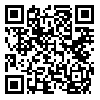Background: Cuffed pharyngeal tube is a device designed for ventilation of anesthetized patients. CPT has advantages over face mask including: maintaining of face mask can be difficult and boring after several minutes and mobility of the practitioner is reduced due to involvement of hands. Mask pressure can cause soft tissue and nerve damage around the nose. Anesthetic gas leakage from the mask adds to the operation room pollution. In difficult intubation CPT can be life-saving.
Materials and Methods: In our study CPT was compared with endotracheal tube (ET) in anesthetized patients. A scoring system for evaluating ventilation of patients was designed using symmetric chest wall motion during ventilation with anesthesia bag and sensing lung compliance through it, auscultation of breathing sounds, oscilation of bag with breathing and peripheral oxygen saturation by pulse oxymetry. Respiratory complications (pulmonary aspiration, Iaryngospasm and bronchospasm, nausea and vomiting) were looked for during anesthesia.
Results: The results showed that CPT was successful as ET in ventilation of spontaneously breathing patients and incidence of respiratory complications with CPT was no more than ET. Airway resistance was significantly greater with CPT than ET (P<0.05). Patients with ET had significantly greater incidence of sore throat than with CPT (P<0.05).
Conclusion: Thus we concluded that CPT can be used for ventilation of anesthetized patients not predisposed to pulmonary aspiration and whose peak airway pressure does not exceed 20-25 CmH2O.
| Rights and permissions | |
 |
This work is licensed under a Creative Commons Attribution-NonCommercial 4.0 International License. |


